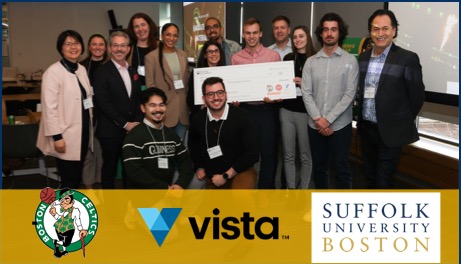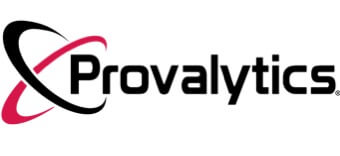Suffolk University Partners with Boston Celtics, Hosts Hackathon with Provalytics CEO
Suffolk University’s Sawyer Business School recently announced a new partnership with the Boston Celtics, launching an interdisciplinary Sports Management program in Fall 2023. As part of this collaboration, the university hosted a ‘hackathon’ event on March 3 during its annual Bridging the Gap Marketing Conference, powered by VistaPrint. Jeff Greenfield, CEO of Provalytics and a member of the Marketing Advisory Council for Suffolk University, participated as a judge in this event.
The hackathon was aimed at helping the Celtics grow awareness and increase the number of applicants for black and minority-owned businesses in New England. Participating students were tasked with forming teams to address this challenge, demonstrating the real-world application of sports business to solve pressing issues.
Greenfield played a pivotal role in the hackathon event by lending his expertise and providing valuable feedback to the participants. His involvement not only elevated the competition but also showcased the strength of the university’s relationships with industry leaders.

The partnership between Suffolk University and the Boston Celtics is designed to offer students unique learning opportunities, including yearly projects from the Celtics and regular visits from their executives and management. Ted Dalton, Chief Partnership Officer for the Boston Celtics, expressed enthusiasm for the collaboration, stating, “We’re honored to be able to team up with Suffolk University to support a comprehensive and contemporary program that helps develop the next generation of sports business leaders.”
The new Sports Management program, directed by marketing professor Skip Perham, brings together existing sports-related courses from both the School of Business and the College of Arts and Sciences. Students can now major or minor in the subject and gain a holistic understanding of the business side of sports.
Perham emphasized the value of the program’s location, citing its proximity to the TD Garden and Fenway Park, as well as the numerous sports corporations headquartered in Boston, such as New Balance and DraftKings. While internships are not guaranteed, students in the program will have a competitive advantage when applying for positions with these organizations, thanks to the strong relationship between the university and the Celtics.
Suffolk University’s partnership with the Boston Celtics marks a significant milestone as the first AACSB-accredited business school in Boston to offer a Sports Management program. Dean of the Sawyer Business School, Amy Zeng, highlighted the importance of this collaboration, stating that it “exemplifies how we utilize our distinctive downtown Boston location and our multidisciplinary programs to create transformational and immersive educational experiences.”
The successful hackathon event, featuring the participation of industry leaders like Jeff Greenfield, further cements Suffolk University’s commitment to providing its students with exceptional educational opportunities. As the university moves forward with its new Sports Management program, students can look forward to even more hands-on experiences, fostering the growth of future sports business leaders.
What is the Suffolk University Boston Celtics partnership?
The Suffolk University Boston Celtics partnership is a collaboration between Suffolk University’s Sawyer Business School and the Boston Celtics NBA team. This partnership focuses on launching an interdisciplinary Sports Management program for students, offering unique learning opportunities, such as yearly projects from the Celtics, regular visits from Celtics executives, and access to industry leaders.
When will the Sports Management program at Suffolk University start?
The Sports Management program at Suffolk University’s Sawyer Business School is set to begin in Fall 2023. It will offer both a major and minor in Sports Management, providing students with a holistic understanding of the business side of sports.
How does the Suffolk University Sports Management program differ from other similar programs?
Suffolk University’s Sports Management program is unique due to its partnership with the Boston Celtics, its downtown Boston location, and its connections with various sports corporations headquartered in the city. Students in the program will have access to yearly projects from the Celtics, visits from their executives, and a competitive advantage when applying for internships with sports-related businesses in the area.
What was the hackathon event held at the Bridging the Gap Marketing Conference?
The hackathon event, held during the annual Bridging the Gap Marketing Conference at Suffolk University, was an initiative powered by VistaPrint and supported by the Boston Celtics. Students formed teams to address a challenge related to growing awareness and increasing the number of applicants for black and minority-owned businesses in New England. Jeff Greenfield, CEO of Provalytics and a member of the Marketing Advisory Council for Suffolk University, participated as a judge in the event, providing valuable insights and feedback to the participants.




 In addition to his expertise in marketing and media, Bill Harvey is also an author of a book titled “
In addition to his expertise in marketing and media, Bill Harvey is also an author of a book titled “